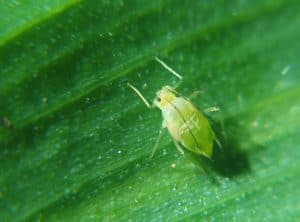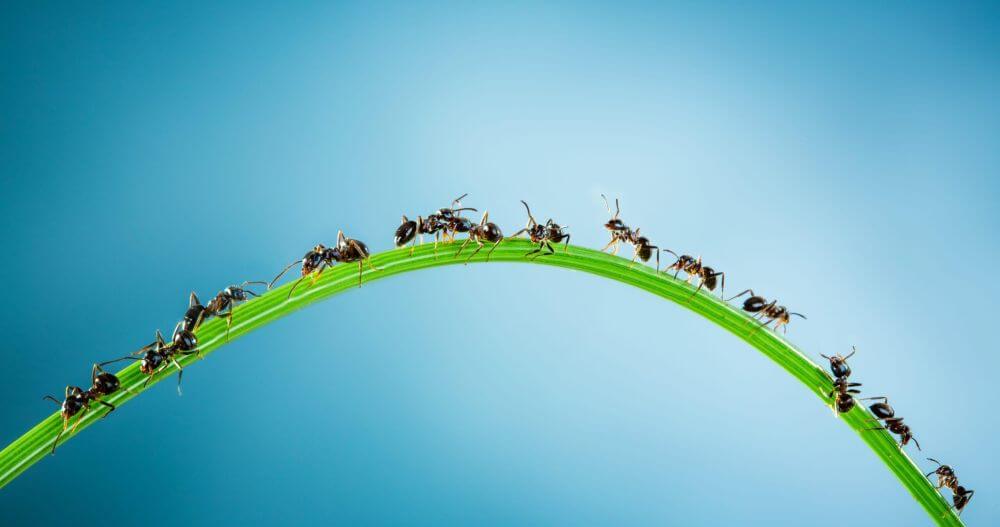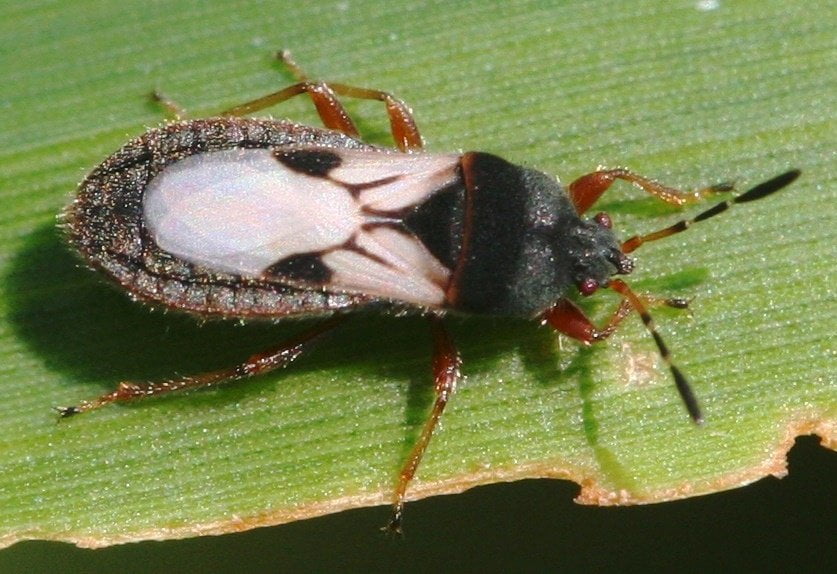Managing Lawn Pests

Even the most beautiful, lush lawns can fall prey to the terror of lawn pests. It can be so aggravating to discover damage caused by insects on your plants and grass year after year. But gardeners and homeowners need not worry for long: there are several simple measures you can take to ward off three of the most common yard pests found in Texas.
1. Aphids
Aphids are tiny, pale green insects with long legs and antennae that often appear in clusters on your plants. Although they are minuscule insects individually, together, they can cause a big problem.
They primarily feed on new growth and the underside of leaves, so this is where you will discover the bulk of their damage. An infestation causes browning and curling of leaves, and the aphids leave behind a sticky, honeydew-like sap that blocks out sunlight and causes leaves to rot.
For minor aphid infestations, spray plants with a strong stream of water mixed with a few drops of dish soap every few days to dislodge the bugs and wash away their sap. For larger groups, there are aphid-specific insecticides you can purchase that can take care of the problem for you.
2. Fire Ants
Not only are fire ant mounds an eyesore on your yard, but they also create a nuisance when you’re constantly worried about the painful bites of the insects who inhabit them. Fire ants prefer open, sunny areas of your lawn and most commonly colonize in spring and fall, although you can find them all year round. They rarely damage turfgrass, but they do leave unsightly ant mounds everywhere and are aggressive insects that sting.

One of the most common fire ant removal methods is called bucketing. When most of the colony is in the mound in the early morning or mid-afternoon, set out several buckets and rapidly dig up the mounds, separating them into different buckets. It is best to sprinkle cornstarch or baby powder around the edge of the bucket so the ants can’t escape. Once the fire ants are in the buckets, you can fill the buckets with water to drown them or deposit the ants away from the yard. While this is an effective method, be warned that there is a high likelihood of getting bitten this way. If you choose the bucketing method, wear long sleeves, landscaping gloves, long pants tucked into socks, and heavy shoes to protect your skin.
Another popular removal method is pouring hot water over their mounds. While this technique may be effective, note that this may kill the surrounding grass and shrubbery.
Finally, the quickest & most effective way is to treat the ant mounds with an insecticide, such as Spectracide. This treatment is safe to apply before, during, or immediately after planting the grass.
3. Chinch bugs
Famous around the Gulf, chinch bugs have long, black, oval bodies, long antennae, and white wings on their backs. They tend to be found on St. Augustine turfgrass and cause damage by extracting juices from a plant, effectively killing it. The grass may at first look like it has drought damage. You will start to see irregular patches of dead grass with rings of yellow, dying grass around them. As they feed  on the grass, the chinch bugs will continuously move to the outer edges of the patches, causing said patches to expand and gradually kill all your grass. To prevent an infestation, minimize your use of lawn chemicals so that birds and more significant bugs will visit and feed on the chinch bugs.
on the grass, the chinch bugs will continuously move to the outer edges of the patches, causing said patches to expand and gradually kill all your grass. To prevent an infestation, minimize your use of lawn chemicals so that birds and more significant bugs will visit and feed on the chinch bugs.
To determine if chinch bugs are causing your dead grass, you can try a popular technique utilizing an empty coffee can. Remove both sides of the can and place it over the suspect patch of grass. Then continuously fill the can with water for several minutes. If more than five chinch bugs float to the surface, you have an infestation, and pest treatment is needed.
To repair chinch bug damages, treat only the infected spots with a special insecticide, such as Spectracide.
Summary
In addition to the specialized suggestions above, there are a few general guidelines for minimizing insect pest problems. The first suggestion is to take advantage of native plants in your yard. Plants native to your region are more adaptive and resistant to pests, so even if insects show up, they won’t be able to do as much damage to your yard.
In addition, infrequent but deep watering of your lawn is recommended to control pests and keep your yard in top condition. Lawn pests are fun for no one, but you can remove them from your yard and keep your grass looking healthy and green with a few simple steps.





